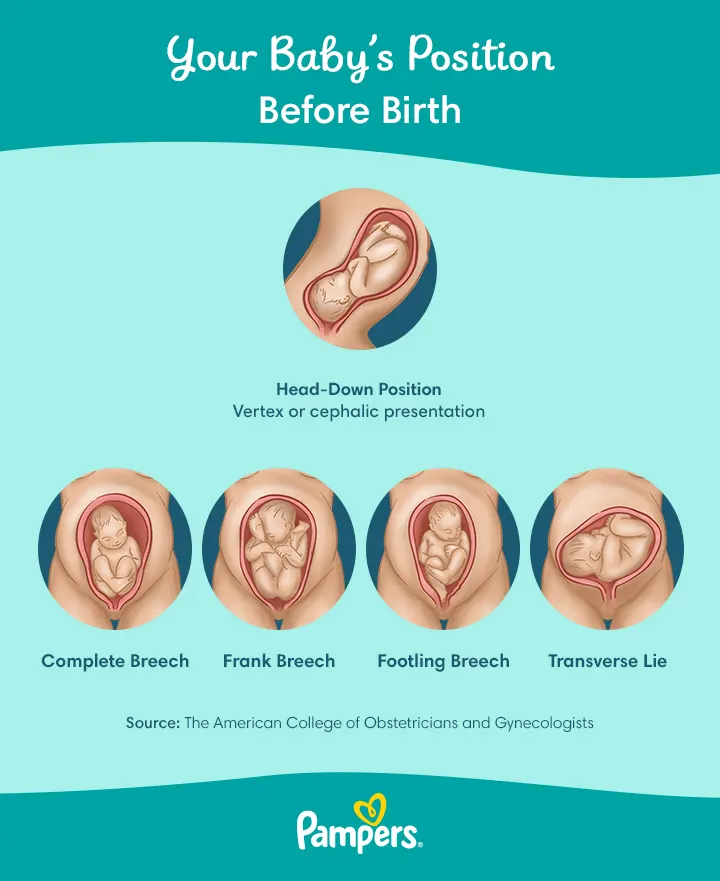During pregnancy, you may have wondered about the frequency at which your baby changes position in the womb. It’s important to note that babies are in constant motion throughout the entire pregnancy. As you approach your due date, your baby will likely settle into a head-down position in preparation for birth. However, before reaching this final position, your baby will go through various changes in position in the womb.
When Does the Baby Change Position?
The frequency at which the baby changes position varies from pregnancy to pregnancy. Some babies may change position multiple times a day, while others may stay in the same position for longer periods. It’s common for babies to change their position once or twice a week if there is enough room in the womb. However, if your baby is running out of space, they may settle into a position and stay there until birth.
Signs That Your Baby Has Turned Into a Head-Down Position
As your baby moves and changes position in the womb, you may experience different sensations. When your baby turns into a head-down position, you may feel kicks higher in your belly or under your ribs. This is because the baby’s head is now closer to the top of your uterus. In contrast, if your baby is in a breech position with their bottom down, you might feel kicks lower in your belly.
How Can You Identify Your Baby’s Position?
You might be able to discern your baby’s position based on their movements. Some movements, like tickles, could indicate your baby’s hands waving around. Harder movements could be caused by their elbows, knees, or feet. Additionally, you can feel your baby’s bum, which will feel squashy, while their head will be firm and round.
Importance of the Baby’s Position in the Womb
The position of the baby in the womb is crucial, especially as you approach your due date. Most healthcare professionals and childbirth experts prefer the baby’s head to be in the occiput anterior position during delivery. This position, with the baby’s head down and facing the mother’s back, is considered the most optimal for a smoother delivery.

Credit: www.healthline.com
When Should Your Baby Be in Position?
Ideally, your baby should settle into the head-down position during the third trimester. However, every baby is different, and some may take longer to assume this position. If your baby has not turned into a head-down position by week 37, your doctor may recommend techniques like the Spinning Babies techniques, which can help encourage the baby to move into the desired position.
Tracking Your Baby’s Position
If you’re curious about your baby’s position throughout the pregnancy, you can keep track of it yourself. You can start monitoring your baby’s position in the second trimester, where you may notice significant changes. You can also find online resources and websites that provide month-by-month guidance on the baby’s position in the womb. Remember, if you have any concerns about your baby’s position or movement, always consult with your healthcare provider.

Credit: www.pampers.com
In Conclusion
Your baby’s position in the womb is constantly changing throughout pregnancy. While it’s common for babies to change position once or twice a week if there is enough room, each pregnancy is unique. As you near your due date, your baby will likely settle into a head-down position. It’s essential to monitor your baby’s movements and consult with your healthcare provider if you have any concerns. Remember, every baby’s journey is different, and your healthcare provider is the best resource for accurate information about your specific pregnancy.
Frequently Asked Questions For How Often Does Baby Change Position In Womb
Does Baby Change Position Every Day?
Throughout your pregnancy, your baby will change position frequently. As you near your due date, they will likely settle into a head-down position in preparation for birth. Your baby will kick, squirm, and flip throughout the day and night. You may feel kicks higher in your belly or under your ribs when your baby is head down, while in the breech position, kicks may be felt lower in your belly.
You can visualize your baby’s position by observing their movements.
At What Week Of Pregnancy Does The Baby Change Position?
Your baby may change position frequently throughout pregnancy but usually settles head-down in the third trimester.
What Does It Feel Like When Baby Switches Positions?
When the baby switches positions, you may feel kicks higher in your belly or under your ribs if the baby is head down. If the baby is in the breech position, you may feel kicks lower in your belly. Keep in mind that the baby’s position in the womb can change frequently.
How Do I Know If My Baby Is Changing Position?
Your baby’s movements and kicks can indicate a change in position. For example, feeling kicks higher in your belly or under your ribs could signal a head-down position. You might also notice tickling movements from their hands or firmer movements from their elbows, knees, or feet.
These are signs of your baby changing position.